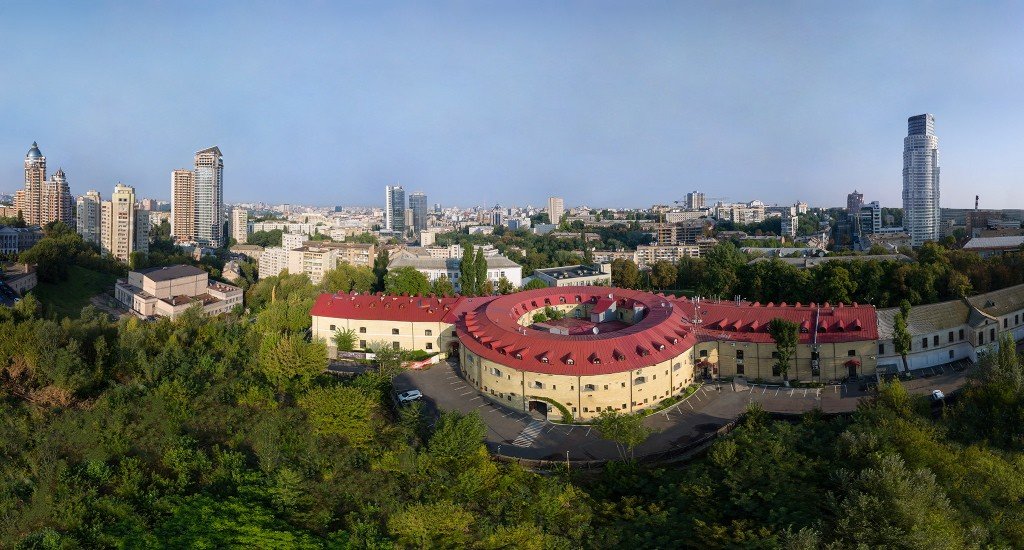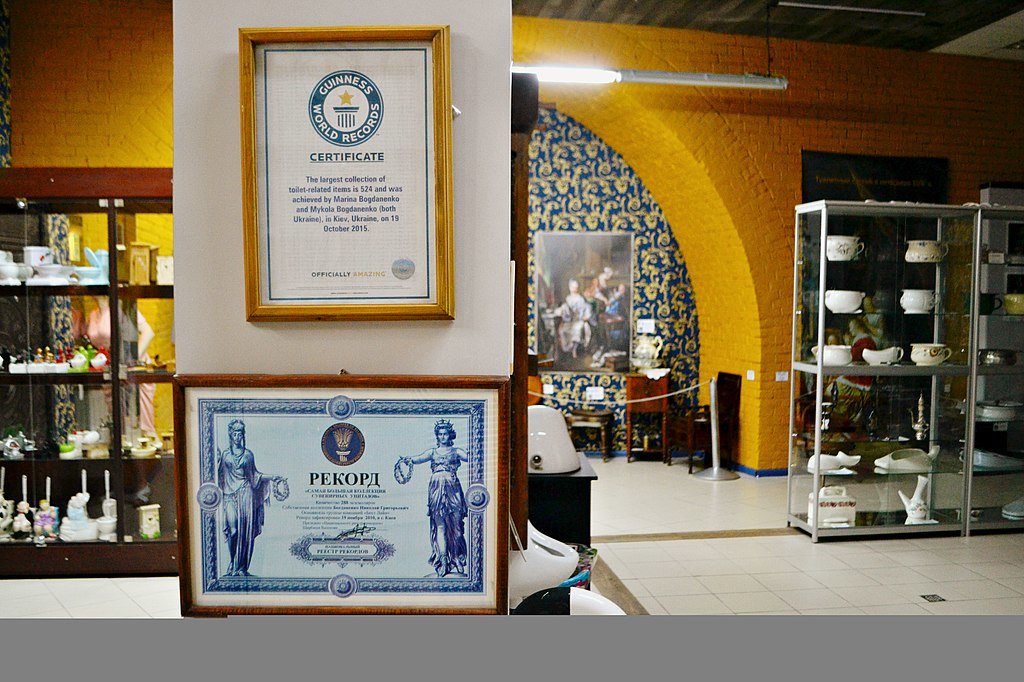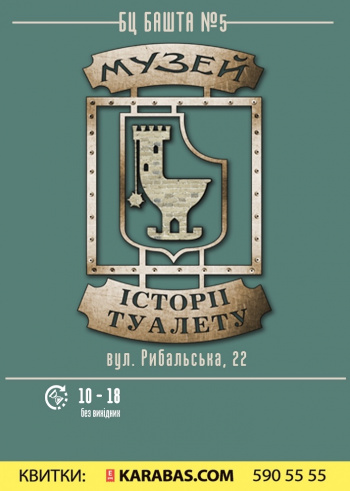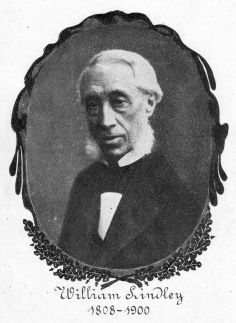The Lindleys
The Family Tree
There is documented evidence of the Lindley family going back to the seventeenth century. The first records come from county Wakefiled, parish - Warmfield-cum-Heath (from the part called Kirkthorpe) in Yorkshire. The name originates from the words "Lilley, liley, lindley” or "lind, lin-leah - where flax was grown", or “Lindle Hill one of the prominences of the ancient outwoods in the neighbourhood of Wakefiel”.
***
I. Michael Lindley of Heath (1680/90-?) = Sara (?-1711)
*
1. Joseph Lindley I of Heath (1709?-4.X.1791) = Mary (1732-18.III.1815)
2. John (16.XII.1710-21.X.1746) = Elizabeth Mortan (?-15.XII.1761)
3. Sara (8.XI.1712-?)
I.2. John = Elizabeth Mortan
*
a. Thomas (1736/7-?)
II. Joseph I Lindley = Mary
*
1. Joseph II (3.XI.1756-16.XII.1808) = Ann Zimmerman (? -22.VIII.1796) = Catherine Searles (23.VIII.1772-25.I.1845)
2. Judith (21.V.1759-6.V.1832) = Harrup (?-2.V.1830)
3. Benjamin (Ben, 2.II.1772-21.XII.1834)
II.1. Joseph II Lindley = Ann Zimmerman
*
a. Ann (1.IX.1793-26.IX.1806)
b. Elizabeth (25.IX.1794-1807)
c. N.N. (1796-1796)
Joseph II Lindley = Catherine Searles
*
c. Catherine (Kate, 27.IX.1802-30.VIII.1884) = Giuseppe M. Campanella (Signor, 2.II.1814-?)
d. Caroline (Cary, 4.VII.1804-24.V.1891)
e. Joseph III (Jos, 14.VI.1806-18.III.1885)
f. William I (7.IX.1808-22.V.1900) = Julie Jeanne Heerlein (Jülchen, 2.XI.1828-1.III.1862)
III. William I Lindley = Julie Jeanne Heerlein
m. 6.IV.1852
*
1. William II Heerlein (Willie, 30.I.1853-30.XII.1917) = Fanny Getz (6.I.1859-4 I/23 II.1931)
2. Robert Searles (Bob, 28.I.1854-1925) = Marie Ladenburg (16.VII.1857-10.III.1925)
3. Julia (Aunt Lula, 11.I.1856-15.I.1937)
4. Joseph IV (Josh, 18.V.1859-20.IV.1906) = Emmy Emilie Suermondt (12.VII.1871-4.III.1960)
III.1. William II Heerlein Lindley = Fanny Getz
m. 25.III.1871
*
a. Julia Fanny Elizabeth (Julia, 28.II.1880-25.III.1942) = Robert Walter Boveri (18.V.1872-25.III.1934)
b. Caroline Ottilie (Ottie, 4.V.1881-25.IX.1925) = Ludwig August Deubner (3.II.1878-25.III.1946)
c. William III Maximilian (Max, 27.VII.1891-2.II.1970) = Florence Mary Spencer (Flo, 29.II.1892-30.VIII.1975)
III.2. Robert Searles Lindley = Sara Amalia Marie Ladenburg
*
a. Edward Searles (Ted, 24.IX.1882-8.VIII.1967) = Helen Crossman Spencer (Helen, 31.VII.1894-7.III.1973)
b. Robert William (2.IX.1883-15.I.1884)
c. Francis Emil Searles (Frank, 4.VIII.1884-23.XII.1962) = Charlotte Elisabeth Foster (Gladys, 12.VIII.1890-21.XII.1976)
d. Eugenie Julia (Jenny, 25.V.1886-12.V.1977)
e. Emma Marie (Ems, 6.I.1889-20.V.1979) = Guy William Egerton (Guy, 24.I.1892-7.VIII.1965)
III.4. Joseph IV = Emmy Emilie Suermondt
m.1.II.1894
*
a. Henry William Lindley (Harry, 19.VII.1898-7.XII.1979) = Hildegund Clara Ottilia Johanna Emma Ankel (8.III.1904-13.III.1993)
b. Julia Anita Lindley (Lia, 4.XII.1903-3.XI.1985)
Biographies:
William Lindley (1808 -1900)
William was born in London on 7 September 1808, the youngest of the four children of Catherine and Joseph Lindley from Heath in Yorkshire. His mother brought the boy up on her own because his father, an astronomer at the Royal Greenwich Observatory for a time and co-producer of the pioneering trigonometric surveys of Surrey, had died three months before he was born.
As a child William suffered from a serious eye complaint which he possibly contracted while poring over his father's encyclopaedia in a poor light. The condition was eventually cured and the boy was able to begin his education in nearby Croydon. He demonstrated a liking for the exact sciences and for technical gadgets when still a child, while at the age of 12 he would show off to his mother and siblings with his experiments with a machine that made electricity.
When he was 16 he went to Hamburg to continue his studies. Six months later he returned to England and began work, undertaking a variety of jobs. It was Francis Giles (1787-1847) who took him on permanently. His connection with this distinguished English engineer provided William with wide-ranging opportunities to acquire the knowledge and practical experience that were to bear fruit in the years that followed. He worked with Giles on his survey of the Mersey River, the construction of the Aire & Calder Canal, and of the Newcastle to Southampton Railway.
In 1833 chance took him to Hamburg on a commission
to carry out a survey in connection with the construction of a railway linking
the city with Luebeck. He was to return there during the years that followed.
There was a fire in Hamburg in May 1842 which had devastating effects for the
city. At the time William Lindley was chief engineer for the Hamburg- Bergedorf
Railway Society, and he was asked to draw up plans for the reconstruction of
the city, including a plan to drain land on the city outskirts. This proposal
proved to be a momentous turning-point in William's life for he was nominated
engineering adviser to the city of Hamburg and consultant engineer to the
Hamburg Water Department and Department of Employment, by virtue of which he
retained links with the city for many years. Lindley was working on plans for a
sewerage system for Hamburg from October 1842. Although it drew on the
experiences of the sewerage system that had already been constructed in
England, Lindley's own design was original and innovatory. Besides the sewerage system for Hamburg, he
also designed water-supply systems. The water intake was in Rothenburgsort,
which lay on higher land. In 1855, on behalf of the city authorities, Lindley
supervised the works being carried out at Altona Gas and at local waterworks.
These were the second waterworks on the continent (after Berlin) in which water
was filtered through sand.
In 1849 W. Lindley was asked by the three German
Hanseatic cities of Hamburg, Bremen and Luebeck to mediate in the disposal of
important sites in London which were once the seat and wharf for Hanseatic
merchants in the city. William discharged the task, which led to the sale of
the land and buildings on it to the Victoria Dock Company. While carrying out
negotiations for the sale of the buildings Lindley also gave his opinion on the
reconstruction of the New River waterworks in London and on reinforcing the
supporting wall in Falm in Helgoland.
During his time in Hamburg, Lindley began to design a system of railway connections for the remaining German states. In 1849 he took part in the railway engineering congress in Vienna after which he visited Venice and Trieste. The discussions on the new order in construction, heralding a change of generation in the society of German engineers, led to Lindley's resignation in August 1860. After working in Hamburg for more than 22 years he left the city for good that autumn.
William Lindley's work in Hamburg included the design and execution of three sedimentation basins, two machine houses with three steam engines with a combined power of 240 HP, a boiler house, a ,,water tower” with a reservoir of stored and rain and snow water in Rothenburgsort, pressure towers at Stintfang and the Berlin Gate as well as a pipe network 133 km long, supplying water to 11,000 homes in the city, suburbs and surrounding area, and to many factories. The list also includes a system for supplying water free of charge for 1,800 hydrants, the city fire service, and laundries and the city baths in the Schweinmarkt. Lindley also designed a new gasworks at Grasbrook, drew up a plan for draining marsh land in Hammerbrook and Billwaerder, and a plan for a new port and the first flood-gate in Oberhafen.
In addition to his work abroad Lindley tried to
take an active part in the social life of his own country. He was keenly
interested in the English movement to improve conditions for the poor and
promote cleanliness; he was also interested in the Anti-Corn Law League, led by
Richard Cobden, the success of which led to a fall in the price of food stuffs,
calmed the Chartist movement which had flared up with the industrialization of
England, and contributed to the increasing trading power of the Empire. He also
supported the Harp Alley School, founded in London for poor children.
In 1852 he married Jeanne Julie, 20 years his junior, the daughter of Martin Heerlein who was a highly respected Hamburg merchant and member of the city committee for urban reconstruction. William Heerlein was born on 30 January 1853, Robert Searles on 28 January 1854, William's only daughter, Julia, on 11 January 1856 and his youngest son, Joseph, on 18 May 1859. The children were all born in Hamburg. Lindley resigned from his work in Hamburg largely because of his wife's health. She died in 1862, barely 34 years of age.
The city of Frankfurt am Main asked in 1863 if he could design a sewerage system and supervise its construction, which meant leaving England once more. In 1873 he brought his eldest son, the 20-year old William Heerlein who had gained some practical professional experience in Budapest, out to Frankfurt. At the end of 1879 William was able to convince the Frankfurt authorities that they could entrust the supervision of the whole works to his son. That same year, at the age of 71, Lindley finally decided to retire, in order to devote himself to travel and reading. Besides Hamburg and Frankfurt am Main, with which the greater part of William Lindley's life had been connected, 15 other towns, including Budapest (Pest), Warsaw, Moscow and Petersburg, had asked him to design water-supply systems and sewerage systems. In 1876 the Government in New South Wales asked him to design a sewerage system for Sydney.
William Lindley was a member of many prestigious British and foreign scientific organizations, including the Geological Society from 1841, and the British Institution of Civil Engineers from 1842. In 1844 he joined the Smeatonian Society of Civil Engineers, and he was its president in 1864.
William Lindley died on 22 May 1900, in his own home at 74 Shooters Hill Road in London, at the age of 92. The cause of death was his generally poor state of health combined with his age and a weak heart which had been troubling him for eight years. His eldest son, William Heerlein, was with him when he died.
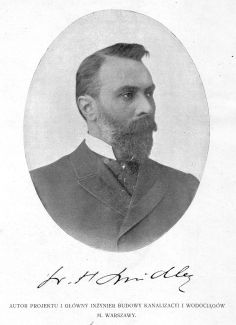
William Heerlein Lindley
William Heerlein Lindley (1853 – 1917)
William Lindley gave his first son, who was born in Hamburg on 30 January 1853, his own Christian name followed by his wife's maiden name, according to British custom. William Heerlein spent his childhood at the family home in Hamburg.
He went to school in England, in Blackheath, and at the age of 16 he matriculated and entered the University of London. Soon after that, however, theory was replaced by practice. As a 17-year old youth William H. was thrown into work at the deep end. From 30 April 1870 he began to work at his father's side, on the construction of a water-supply system in Budapest (Pest). In 1871 he assisted his father in preparing a report and general layout for supplying water to the town of Chemnitz in Saxony; the following year he helped to design a sewerage system for Duesseldorf where he also led the preliminary construction work. As his father's representative he spent time in Rumania in 1873, in the towns of Jassy, Braila and Galacz. When the position of on-site engineer in Frankfurt am Main became free W. Lindley brought his son there, and the battle began to entrust him with this responsible position.
In 1876, at the age of 23 years, William Heerlein Lindley was formally employed as assistant in the municipal sewerage office in Frankfurt. From July he was in sole charge of the building work begun by his father, as assistant to the chief engineer. After several years of discussion, the city agreed in 1883 to engage William H. Lindley in perpetuity as chief engineer (adviser), with permission to work outside Frankfurt. At barely 30 years of age W.H. Lindley became not only the first municipal manager of construction works on land in the history of Frankfurt, but also one of the city's highest-paid civil servants. As a construction adviser, William H. was in charge of all construction on land and water in Frankfurt. He led the building of a railway bridge over the Main and Neckar, and of a road bridge (Wilhelmsbruecke); he laid out many new streets and carried out technical negotiations for drawing up contracts with gas companies and with a Belgian company for constructing streets and roads. He made a major contribution to the work of making the Lower Main, which had been regulated between Munich and Frankfurt since 1883, navigable. During this period William H. also began work on the sewerage system and water supply for Warsaw, while the Tsarist authorities were tempting him with work throughout the Empire. In order to keep pace with his new tasks, Lindley asked the Frankfurt authorities partially to release him from his civil commitments there and he voluntarily gave up a third of his endowments.
In the summer of 1884 he began to construct Frankfurt's West Port in which it was possible to start installing machinery as early as autumn 1886. Frankfurt became an important river port, and with time became south-west Germany's main trading centre. While he systematically expanded the Frankfurt water and sewerage installations, William H. also reorganized the city's entire engineering service.
In 1892 the city entrusted W.H. Lindley and Dr. Oskar von Miller with the design of the general layout for the city's electrical power station. The plan was carried out the following year. The power station began to function normally from 1 January 1895. In 1897 he received another commission, this time from the Elberfeld municipal authorities, to design a power station there. At the end of March 1895 the working relationship between the city of Frankfurt and W.H. Lindley was terminated. Lindley began a private engineering practice from 1 April 1895, and set up his own office in Frankfurt. Under these new conditions he continued to work on his numerous commissions, such as the power station, the design of a water-supply system, and the introduction of an electric tram.
W.H. Lindley designed water-supply and sewerage systems for as many as 36 European towns (including Łódź, Radom and Włocławek), from the Rhine to the Caucasus. Apart from the municipal developments for Frankfurt, his most important work was the water supply and sewerage system for Warsaw, the water supplies for Pest, Prague and Baku, and an unrealized design for supplying water to Petersburg.
During his life he fulfilled numerous social and honorary functions both in England and on the Continent. He was a member of 32 European professional Commissions and Societies. In 1904 and 1905 he was president of the Institution of Junior Engineers. He also belonged to the Royal Geological Society in London and the Royal Commission on Canals and Waterways. As a member of this Commission he studied the waterways in Germany, France, Belgium and Holland from 1906 to 1908. These studies gave rise to a report for which W.H. Lindley received a knighthood from King George V.Sir William Heerlein was, like his father, a member of the Institution of Civil Engineers.
On the Continent too W.H. Lindley enjoyed great respect and recognition. The Grand Duke of Hess's Technical High School in Darmstad awarded him an honorary doctorate in Engineering Sciences and the city of Baku gave him honorary citizenship. He took an active part in the work of the Society of Polish Engineers, and represented the Warsaw District at the All-Russia Water-Supply Congresses. At the third Congress in Petersburg in 1897 he was elected chairman of a Commission, the task of which was to work out the principles for standardizing Russian cast-iron pipes and sleeves.
He married at a younger age than his father, when 26, to Fanny Henriette Getz, six years his junior, born in Frankfurt and the daughter of a successful doctor. The wedding took place on 24 March 1879 in Frankfurt, and it was there that their children were born: Julia Fanny Elisabeth in 1880, Ottilia in 1881 and a son William Maximilian in 1891. When World War I broke out he had to leave Germany as he was a citizen of a country now at war with the German Reich, and was threatened with internment. W.H. Lindley was an enthusiastic mountaineer, and a keen horseman. His colleagues' recollections reveal him to be a witty man, often amusing and with a love of life. His frequent travelling however, and the varied, sometimes poor conditions in which he had to stay, destroyed his health and William Heerlein died in London on 30 December 1917 of a heart attack, at the age of 64.
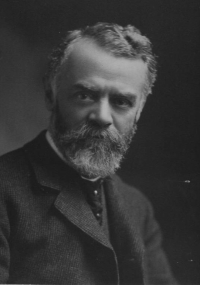
Robert Searles Lindley
Robert Searles Lindley (1854 – 1925)
Robert Searles was born in Hamburg on 28 January 1854. His mother noted briefly that he was vaccinated on 10 April of that year, and that he began to walk unaided on 31 March 1855.
We do not know very much about his childhood and education. From a letter written to his father from Frankfurt in June 1880 we learn that Robert differed from his older brother in temperament and attitude to life. At the age of 26 he considered himself to be completely lacking in any spirit of independence, afraid of being dominated by his brother William Heerlein's stronger character. Being under his father's thumb, he was expected to follow his advice and instruction. In 1880 he settled in Frankfurt, in his brother's apartment on Blittersdorffsplatz 29, so as to carry out work for the family firm. He appreciated the atmosphere of a family home and enjoyed the elements of English cultural life that existed in the city.
He accompanied William Heerlein to Warsaw and formed an excellent impression of the city's president, Sokrates Starynkiewicz. Robert Searles stayed in Warsaw many times from 1881-1887, representing the Lindley firm. Initially, contact with president Starynkiewicz, and the negotiation of conditions for employing local professionals, rested on his shoulders. During his visits to Warsaw he often stayed at the Hotel Rzymski on the corner of Trębacka and Nowosenatorska Streets.
On 10 January 1882 he married Sara Amalia Marie Ladenburg, three years his junior, the daughter of a banker in Frankfurt am Main and from a large German- French family. The civil ceremony took place in Frankfurt, in the presence of the British consul.
William Heerlein commended his brother's knowledge in the face of criticism from Adolf Suligowski in the following words: ,,Engineer Robert S. Lindley who is 30 years of age has been involved in a practical way for 10 years in the construction of sewerage systems and water supplies, and has participated in preparing projects for various towns. Amongst other things he has been involved in the detailed preliminary design for Warsaw under the supervision of my father and myself, and as a result he is familiar with all aspects of this project and has proved himself to be able to carry out his present duties particularly effectively.
When he was working in Frankfurt for a long time, directly responsible for construction and for the sewerage system, and in charge of the works, he also acquired a great deal of information and experience in this branch of the technology. As proof of the technical competence of both these engineers, I can confidently point to the constructions in Warsaw carried out by them in part, despite the great difficulties they have encountered (...) finally I must point out the fact that both my assistants possess a quality the significance of which should be recognized not only by myself but also by those people who are familiar with the affairs of Warsaw, and that is conscientiousness in the full sense of the word, and without any shadow of doubt (...).”
The Lindleys' first son, Edward Searles, was born on 24 September 1882, at their Warsaw apartment at 17 Smolna Street. Their second son, Robert William, was born on 2 September 1883, but died four months later. Their third child, Francis Emil Searles, was born on 4 August 1884 in Frankfurt. A daughter, Eugenie Julia Lindley, was born on 25 May 1886, also in Warsaw, but in an apartment at 25 Smolna Street, while their fifth and last child, Emma Marie, was born on 6 January 1889 in Hamburg.
Robert S. Lindley worked as an engineer on the continent
on various projects until 1889, when he decided to return to England for good
in order to make sure that his children had an English upbringing. In fact,
W.H. Lindley had to recall Robert to Frankfurt in 1887, and engineer H.
Hoehmann, so unpopular with the Poles, shortly afterwards, in connection with
the faulty construction of a sewer which ran from today's Dąbrowskiego Square
via Kredytowa and Traugutta Streets, for the ,,lowering and rebuilding” of
which ,,the eldest brother had to pay 40,000 roubles out of his own pocket”.
At the end of 1890 and beginning of 1891 Robert Searles rented two summer houses for his family in Sandown on the Isle of Wight, and his brothers travelled there with their father William, and his daughter Julia, the children and their nannies from the house in Blackheath.The family gathering has been recorded in a photograph. In about 1897, at the age of 43, Robert S. Lindley gave up his professional life and moved to Godstone Place, in Surrey, where he bought a house and farm on the edge of a village.
Sara Amalia died on 10 March 1925, and Robert Searles, who lost the will to live after his bereavement, died on 9 July that same year, aged 71.
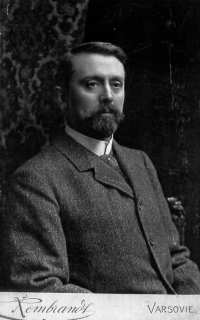
Joseph IV Lindley
Joseph Lindley (1859 – 1917)
The youngest of William Lindley's three sons was born in Hamburg on 18 May 1859, and was baptized on 15 October that year. Joseph was educated in England, and studied engineering at London University.
He began his professional career, like William Heerlein, with his father in Frankfurt am Main. Two letters written from Frankfurt to his brother, Robert Searles, in Warsaw in 1881 reveal that although he was the youngest, he acted as W.H. Lindley's intermediary and confidant in many important matters. After his father retired in 1879, 20-year old Joseph continued to work on behalf of his brothers, managing the sewerage works in Elberfeld amongst other projects, and working on the design of sewerage systems for Petersburg and Duesseldorf.
In Elberfeld he designed and constructed great
rainwater reservoirs for a special separate system for supplying water to a
high-lying part of the town and a combined sewerage system installed in the
lower parts of the town, on the banks of the river Wupper.
When the work in Elberfeld was handed over for use in 1884, Joseph became a resident engineer there, in the name of his brother, W.H. Lindley. He held this position until December 1888 when he took charge of building sewerage systems and water supplies in place of his brother, Robert. One of Joseph Lindley's apartments in Warsaw was on 5 Hortensja Street (in 1890), and he was connected with the city for 17 years.
The author of a short piece about Joseph Lindley wrote: ,,In Warsaw, the construction of the pumping station on the Vistula, and the filter station in the upper part of the city, with vast arches in the vaulting of the reservoirs and filters, was carried out under his direct management, as were the main part of the sewerage system and drainage of the city over an area of 105 sq miles, and a trigonometric survey of the city and its suburbs. He and his professional colleague, Alfons Grotowski, administered these when the work was concluded. The success of the works carried out under his direction was to a considerable extent the result of his own deliberations and the exceptional importance he attached to the tasks entrusted to him, and the energy with which he dealt with the many kinds of problems of which those of an administrative nature, not to be separated from public works in Russia, were not the least important.” Joseph Lindley was also responsible for inspecting the works and preparing reports on them. Polish colleagues recalled how every evening he organized meetings of members of the sewerage department, and wrote reports which were submitted almost daily to the city president himself. ,,(...) he developed some very useful work for us here. Warsaw owes a debt of gratitude to his great industry and energy in bringing these works to their conclusion (...)”, commented the author of the entry for J. Lindley in the Great Illustrated Encyclopaedia of 1910.
There is only meagre information about Joseph's private life. On 1 February 1894 he married Emmy Suermondt from Wrocław (Breslau). They had two children, born in Warsaw. Their son, Henry William, was born on 19 July 1898 and their daughter, Julia Anita, on 4 December 1903. Joseph Lindley was well-known for his linguistic abilities. He spoke and wrote fluently in German, French and Russian. He zealously learnt Polish in order to communicate with his workers, and also to follow what was being published in the local press.
He surrounded himself exclusively with Poles and took active part in the life of the city; he partly financed, and was a faithful reader of ,,Przegląd Techniczny”. He was held in great respect by his employers and much liked by his colleagues. The particular qualities that were typical of him were his sense of fairness, kind-heartedness and readiness to help anyone who came to him for help. He was a member of the Institution of Civil Engineers, the Russian Society of Water Engineers and many other European organizations.
He was obliged to resign his position in 1905 because of his deteriorating health. He died in Ober Ursel in Germany on 20 April 1906, aged 47 years.
As Emil Sokal wrote: ,,(...) The causes of his premature death should be sought in the burden of the professional work which initially gave rise to nervous illness, and when the doctors' efforts turned out to be fruitless, and when the journeys to southern climes and stays there made his condition worse instead of easing and improving it, he returned to Frankfurt ill and went to a sanatorium for those with nervous illnesses for a cure and there he lived out his hard-working life.”




